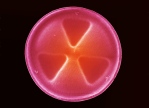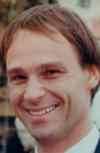1628 – London, England
‘Circulation of the blood’
As WILLIAM GILBERT had begun in physics, and FRANCIS BACON had subsequently implored, Harvey was the first to take a rational, modern, scientific approach to his observations in biology. Rather than taking the approach of the philosophers, which placed great emphasis upon thinking about what might be the case, Harvey cast aside prejudices and only ‘induced’ conclusions based on the results of experiments and dissections, which could be repeated identically again and again.
After what GALEN had begun and VESALIUS had challenged, Harvey credibly launched perhaps the most significant theory in his field of biology. He postulated and convincingly proved that blood circulated in the body via the heart – itself little more than a biological pump.
Galen had concluded that blood was made in the liver from food, which acted as a fuel, which the body used up, thereby requiring more food to keep a constant supply. Vesalius added little to this theory. Harvey, physician to Kings James I and later Charles I proved his theory of circulation through rigorous and repeated experimentation. He correctly concluded that blood was not used up, but is recycled around the body.

His dissections proved that the arteries took blood from the heart to the extremities of the body, able to do so because of the heart’s pump-like action. He could see that the pulses in arteries came immediately after the heart contracted, and became certain that the pulse was due to blood flowing into the vessels.
By careful observation he found that blood entered the right side of the heart and was forced into the lungs, before returning to the left side of the heart. From there it was pumped via the aorta into the arteries around the body.
Harvey realized that the amount of blood flowing around the system was too much for the liver to produce. The blood had to be circulating back to the veins; which, with their series of one-way valves, brought blood back to the heart.
Without a microscope it was impossible to see the minute capillaries that linked the arteries to the veins.
Harvey published his findings in the 720 page ‘Exercitatio Anatomica de Motu Cordis et Sanguinis in Animalibus‘ ( Anatomical Exercise on the Motion of The Heart and Blood in Animals ) at the Frankfurt Book Fair in 1628.
Initially supported by some academics, an equal number rejected his ideas. One area of weakness was that he was unable to offer a proven explanation for how the blood moved from the arteries to the veins. He speculated that the exchange took place through vessels too small for the human eye to see, which was confirmed shortly after his death with the discovery of capillaries by Marcello Malphigi with the recently invented microscope.
Even then, nobody knew what blood was doing. It would take another hundred years before ANTOINE LAVOISIER discovered oxygen and worked out what it did in the body.
In 1651, Harvey published ‘Exercitationes de Generatione Animalium‘ ( Essays on the Generation of Animals ), a work in the area of reproduction which included conjecture that rejected the ‘spontaneous generation’ theory of reproduction which had hitherto persisted. His belief that the egg was at the root of life gained acceptance long before the observational proof some two centuries later.
Related sites
- The Old Operating Theatre (www.thegarret.org.uk)



 TIMELINE
TIMELINE







